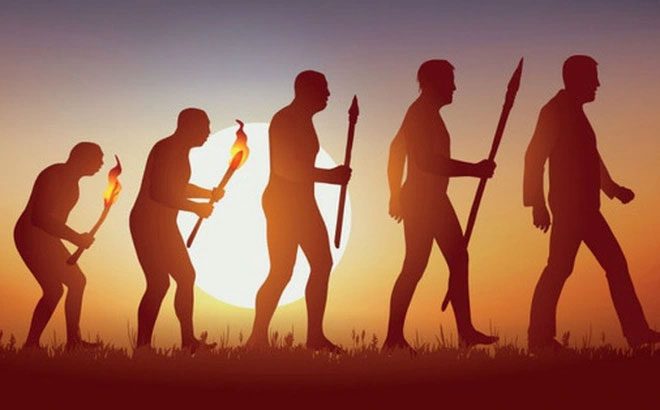Scientists and philosophers have introduced a new natural law, based on the theory of evolution referenced by the scholar Charles Darwin in his book published in 1859 about the origin of species on Earth. This new natural law was published in the Proceedings of the National Academy of Sciences of the United States on October 16.
Compared to the theory of evolution proposed by Charles Darwin 164 years ago, the new natural law also encompasses Darwin’s evolutionary principles. However, this new law views Darwin’s evolutionary theory as merely a clear illustration of a much broader evolutionary process, spanning from the atomic and mineral levels, to the planetary atmosphere, and extending to planetary systems, stars, and beyond. The proposal of the new law suggests that complex natural ecosystems evolve into states with greater biological organization, along with increased diversity and complexity.

The evolution of humanity.
For example, at the stellar level, scientists explain the evolutionary process as follows. The earliest stars formed in the universe created the first supernova explosions at the end of their life cycles, leaving behind remnants that formed the next generation of stars. These first-generation stars could generate about 20 natural elements heavier than helium, such as carbon, nitrogen, and oxygen, through stellar nucleosynthesis during their lifetimes or via supernova nucleosynthesis when the stars exploded. Meanwhile, second-generation stars created nearly 100 additional elements through similar reactions.
Titled “the law of enhanced functional information”, the new proposal argues that ecosystems on Earth always form from multiple basic biological units interacting with each other, such as atoms or cells. As these interactions occur, such as cellular mutations, they create different biological organizations, referred to as the hierarchy of life systems. The new law proposal also asserts that evolution occurs when the hierarchical levels of living systems must adhere to selection pressures that yield beneficial functions. In this proposal, the group of scientists addresses ecosystems on Earth, including biotic components (the organic substances present in the surrounding ecological environment) and abiotic components (the physical and chemical factors of the environment that lack life).
Astrobiologist Robert Hazen from the Carnegie Institution of Science (USA) stated that the research team views the evolutionary process as one that applies to all ecosystems on Earth, including both biotic and abiotic components. Over time, this evolutionary process increases the diversity and forms of existence of species. However, Hazen noted that the new law does not describe or explain why the diverse world of species continues to evolve into increasingly diverse and complex forms at atomic, molecular, mineral, and other levels.
The authors propose three universal concepts of selection in the evolutionary process of species. These include basic endurance, the nature of active selection processes that occur over extended periods, which can serve as a foundation for evolution to take place, and the emergence of new traits to adapt to the environment.
According to scientist Michael Wong, who specializes in astrobiology at the Carnegie Institution of Science and is the lead researcher, the contents of the new natural law proposal construct a comprehensive picture of the formation of the universe stemming from selection to ensure the maintenance of the beneficial functions of each level of biological organization.
Co-author Jonathan Lunine from Cornell University (New York, USA) mentioned that establishing such a law would provide a new perspective, explaining why diverse ecosystems in the universe evolve in their unique ways. Additionally, this new law could help scientists predict how unfamiliar ecosystems might develop over time. For instance, researchers could further study chemical environments with complex organic compounds on Titan, known as Saturn’s moon.


















































